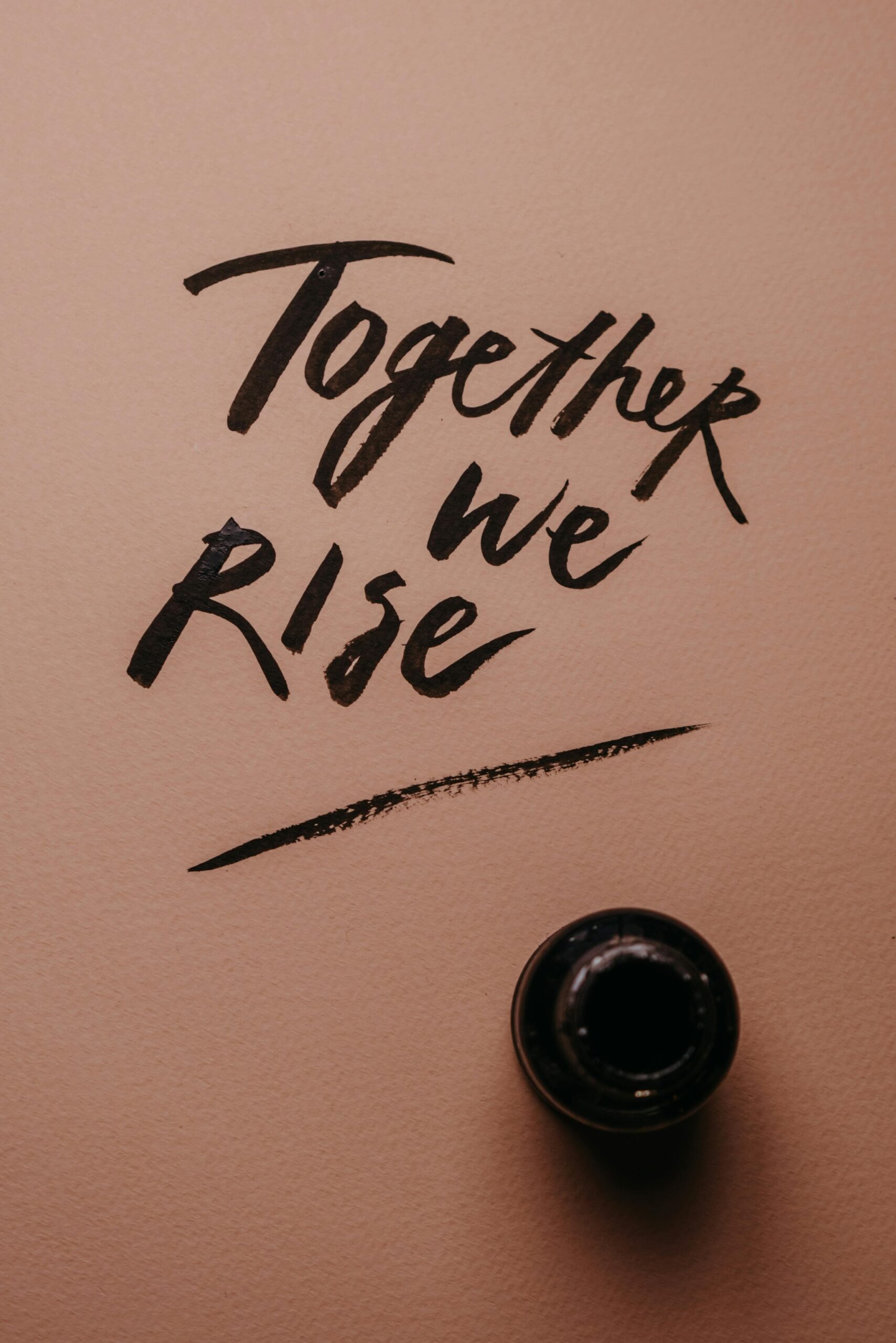
Ideas Worth the Risk
Where Agencies Evolve and Startups Survive



Ideas Worth the Risk
Agenciadoo is a blog about the real startup grind. I write about tech, founders, agency life, and the unfiltered journey of building something from nothing. No fluff, no overnight success myths — just honest takes on AI disruption, pitch decks, pivots, and the bold (and sometimes stupid) decisions we all make along the way. If you’re a builder, a dreamer, or just trying to figure it all out, this space is for you.
Start Small. Think Loud. Move Fast.
- The Most Trusted AC Repair Company in Cooper City, Floridaby Liz
If you live in Cooper City, you know that when your air conditioner stops working, life instantly gets uncomfortable. Between the heat, humidity, and the relentless Florida sun, a broken AC feels like an emergency. When mine went out, I started searching for the most trusted AC repair company in Cooper City—and that’s exactly what I found.
What caught my attention first were the amazing reviews. I read story after story of people describing fast service, fair prices, and friendly technicians. It wasn’t just one or two glowing comments—there were dozens of them. Everyone seemed to be saying the same thing: this company actually cared about doing a great job. That kind of consistency told me everything I needed to know.
So I gave them a call. From the very beginning, I could tell this was going to be a different experience. The person who answered was polite, professional, and scheduled my appointment right away. Within a short time, I got a call from the technician who was already on the way. He called ahead, confirmed the details, and even asked if there were any special instructions before arriving. That level of communication alone gave me confidence.
When the tech arrived, he was right on time—something that’s almost rare these days. He introduced himself, wore protective covers over his shoes, and went straight to work. He quickly diagnosed the issue, explained what needed to be done, and made sure I understood everything before moving forward. No confusing jargon, no upsells, no nonsense—just clear communication and professional service.
He replaced a faulty part and had the system running again in no time. Within minutes, I could feel the cold air pouring through the vents. That first rush of cool air after hours of heat felt like a small miracle. My home finally started to feel like home again.
What really stood out, though, was how thorough and thoughtful the technician was. Before he left, he made sure all of our questions were answered. He took the time to explain what went wrong, how to prevent it in the future, and even offered a few smart tips on how to lower our electric bill—simple things like cleaning the air filters more often, adjusting the thermostat a few degrees when we’re not home, and keeping doors closed to help the system work more efficiently. It wasn’t a sales pitch—it was genuinely helpful advice.
The company also guarantees their work, which gave me even more peace of mind. In a world where so many repair services try to disappear after you’ve paid the bill, it’s refreshing to find a business that stands behind what they do. Knowing that if anything goes wrong, they’ll make it right—that’s real customer care.
Another thing that impressed me was their professionalism from start to finish. The technician didn’t just fix the problem and rush out the door. He ran the system for a few minutes, checked the temperature difference between intake and output, made sure the pressures were balanced, and only left once he was satisfied that everything was performing perfectly. He even wiped down the unit and left the workspace spotless.
I couldn’t be any happier with the service I received. They were fast, friendly, and affordable—the perfect combination. It’s easy to see why they’ve earned such great reviews from so many people in Cooper City and beyond. You can tell this company has built its reputation on honesty, reliability, and attention to detail.
In today’s world, where customer service often feels like an afterthought, it’s refreshing to find a company that still values integrity. They didn’t try to scare me into replacing the entire system or suggest unnecessary “maintenance plans.” They just fixed what was broken, explained what they did, and left me with an air conditioner that blows ice-cold air and a bill that didn’t make me cringe.
Now, whenever anyone in my neighborhood complains about their AC, I don’t hesitate to recommend this company. They earned my trust the old-fashioned way—by showing up, doing great work, and treating me with respect.
If you’re in Cooper City, Florida, and you’re looking for the most trusted AC repair company, I can tell you firsthand—you don’t have to look any further. Call the team with the reviews that speak for themselves, the service that lives up to the hype, and the guarantee that keeps your home comfortable and your mind at ease.
My house is cool again, the air is crisp, and my electric bill is lower than it used to be. I couldn’t ask for more.
- Unlocking the Power of Digital Marketing: A Guide for Modern Businessesby LizIn today’s fast-paced world, digital marketing has become an essential component for businesses looking to thrive. Whether you’re a small startup or an established corporation, leveraging digital channels can significantly boost your visibility and success. At *Agencia Doo*, we understand the importance of navigating this dynamic landscape and are here to guide you through it. ## Why Digital Marketing Matters Digital marketing is not just a buzzword; it’s a powerful tool that enables businesses to connect with their target audience in a meaningful way. Here are a few reasons why digital marketing is crucial: – **Wider Reach**: Unlike traditional marketing, digital strategies allow you to reach a global audience. – **Cost-Effective**: Digital marketing provides a higher return on investment (ROI) compared to traditional methods. – **Measurable Results**: Analyze and adjust strategies in real time with precise metrics and analytics. – **Targeted Campaigns**: Tailor your campaigns to specific demographics, ensuring higher engagement rates. ## Key Components of Digital Marketing To harness the full potential of digital marketing, it’s important to understand its core components. Here’s a breakdown of the key elements: ### 1. **Search Engine Optimization (SEO)** SEO is the process of optimizing your website to rank higher on search engine results pages (SERPs). This increases organic traffic and visibility. Key aspects of SEO include: – **Keyword Research**: Identifying and using relevant keywords. – **On-Page Optimization**: Enhancing your website’s content and structure. – **Off-Page Optimization**: Building high-quality backlinks. ### 2. **Content Marketing** Content is king in the digital world. Creating valuable and relevant content helps attract and engage your target audience. Consider the following: – **Blog Posts**: Share informative articles on industry trends and insights. – **Videos**: Create engaging video content for platforms like YouTube and TikTok. – **Infographics**: Use visuals to simplify complex information. ### 3. **Social Media Marketing** Social media platforms like Facebook, Instagram, and Twitter offer unique opportunities to connect with your audience. Strategies include: – **Consistent Posting**: Maintain a regular posting schedule to keep your audience engaged. – **Interactive Content**: Use polls, quizzes, and live sessions to boost interaction. – **Influencer Collaborations**: Partner with influencers to expand your reach. ### 4. **Email Marketing** Despite the rise of other digital channels, email marketing remains a powerful tool. It’s personal, direct, and cost-effective. Key tactics include: – **Personalized Campaigns**: Tailor emails to fit the recipient’s needs and interests. – **Automated Workflows**: Use automation to send timely and relevant emails. – **List Segmentation**: Divide your email list into segments for targeted messaging. ### 5. **Pay-Per-Click (PPC) Advertising** PPC advertising allows you to bid for ad placement on search engines and other platforms. It’s an effective way to gain immediate visibility. Important elements include: – **Keyword Targeting**: Choose keywords that potential customers are searching for. – **Ad Copy**: Craft compelling ad content to attract clicks. – **Budget Management**: Monitor and adjust your ad spend for optimal results. ## Creating a Winning Digital Strategy To create a successful digital marketing strategy, follow these steps: 1. **Set Clear Goals**: Define what you want to achieve—brand awareness, lead generation, sales, etc. 2. **Identify Your Audience**: Understand your target audience’s needs, preferences, and behaviors. 3. **Choose the Right Channels**: Select digital channels that align with your audience and objectives. 4. **Create Quality Content**: Develop content that resonates with your audience and adds value. 5. **Analyze and Optimize**: Regularly assess your performance and refine your strategy for better results. ## Conclusion Digital marketing is an ever-evolving field that offers endless opportunities for businesses willing to embrace it. By understanding its components and implementing a comprehensive strategy, you can significantly enhance your brand’s visibility and drive growth. At *Agencia Doo*, we’re committed to helping businesses navigate the digital marketing landscape with confidence and success. Embrace the digital revolution and watch your business soar!
- Why Agency Models Are Being Disrupted by AI
 by Liz
by LizI run in circles where agencies used to be king. Creative, branding, copywriting, design, dev — bundle it up, bill it big, scale with people. That’s the model I came up in. I’ve worked for them, with them, and even built one myself.
But now I’m watching that model quietly — and sometimes not so quietly — fall apart. The culprit? AI.
And I don’t mean the flashy demos on Twitter or the “write me a poem” fluff. I’m talking about real tools replacing real services.
Clients Are Asking New Questions
Two years ago, a founder might’ve asked, “Can you build me a pitch deck for investors?”
Now? They ask, “Can ChatGPT do this?”
And the answer is: kind of. But even kind of changes the math.
When clients can generate a brand voice, summarize a market report, write 30 Instagram captions, and mock up a homepage wireframe in under an hour — the question becomes, “Why am I paying an agency $10K+ for this?”
It’s not that AI always gets it right. It’s that it gets it close enough to challenge the value proposition of agencies built on time and deliverables.
What Used to Be Billable Isn’t Anymore
I’ve seen agencies whose entire model was based on content calendars, ad copy, product descriptions, and blog post packages. Now those things are half-automated. Clients still want human polish — but they expect speed, scale, and AI-enhanced pricing.
Same goes for UX flows, visual design options, brand strategy docs. We used to bill for discovery phases, brainstorming sessions, and early iterations. Today, AI can produce 80% of those raw materials in seconds.
That shifts client expectations. Dramatically.
Team Structures Are Changing
Agencies were built to scale with people — more work meant more headcount. But with AI, the ratio breaks. I’ve seen one-person brand shops run circles around five-person creative teams because their AI stack handles first drafts, outlines, email sequences, moodboards, and more.
I’m not saying people are replaceable. I’m saying AI changes the leverage. A strategist with a prompt library is more dangerous than a team without one.
Agencies that don’t lean into AI augmentation are going to get outpaced — not because they’re less creative, but because they’re slower and more expensive.
So, What’s the New Value?
If you run an agency (or are thinking of starting one), here’s the shift I’m betting on:
- From labor to leadership — clients don’t just want you to do the work, they want you to guide it.
- From deliverables to direction — AI can generate content, but it can’t decide what’s worth saying. That’s where strategy lives.
- From headcount to headspace — your agency wins when it becomes the thinking partner, not just the output factory.
Final Thought
AI isn’t killing agencies. It’s killing lazy ones. It’s killing bloated ones. It’s killing the ones that charged for things people can now get in a Chrome extension.
But the ones who adapt — who build faster, think deeper, and lead smarter — those are the agencies of the next wave.
I’ve stopped selling time. I sell clarity, systems, and outcomes. The future’s not less human. It’s more augmented. And it’s already here.
- Lessons From Failed Startups No One Talks About
 by Liz
by LizI’ve been part of a few startups that didn’t make it. Some fizzled quietly. Others crashed harder than I care to admit. And while every podcast loves to glorify the pivots, acquisitions, or epic comebacks, there’s a whole world of uncomfortable truths no one really shares about failure — especially in early-stage startups.
So here’s the stuff I wish someone had told me.
1. Momentum Hides Problems
When things are “busy,” it’s easy to feel like you’re succeeding. Meetings, prototypes, user feedback, launches — it all feels productive. But momentum isn’t traction. One of my first startups had energy and buzz, but not a clear value proposition. We were moving fast… in circles. If your calendar is full but revenue isn’t growing, something’s off.
2. Founders Drift Apart
This one hurts. You start out excited, aligned, and full of shared vision. Then priorities shift. One co-founder starts treating it like a side project, another wants to raise money immediately, and suddenly you’re not on the same page. Communication breaks down, resentment brews, and eventually someone ghosts. We don’t talk enough about founder breakups — but they’re one of the most common reasons things fall apart.
3. Building the Wrong Thing Really Well
One of my most polished MVPs flopped. We had slick UI, a solid tech stack, great performance… but the wrong feature set. We built what we thought users needed instead of what they actually wanted. I skipped the painful user interviews in favor of “moving fast.” Big mistake. The result? A beautifully useless product.
4. Nobody Cares Unless You Make Them Care
You can have the best tool in the world, but if your story doesn’t resonate — no one will click, sign up, or pay. In one failed startup, we focused 100% on the product and 0% on the brand, the messaging, or the positioning. We couldn’t explain why we existed in one sentence. That’s death in a world flooded with noise.
5. You’ll Burn Out Faster Than You Think
I used to think burnout happened after years. Nope. It can show up six months in. Especially when you’re wearing 10 hats and getting little return. One failure taught me that rest is strategic — not a reward, but a requirement. Without it, your decision-making gets worse and your product suffers.
6. Failure Feels Personal — But It Isn’t
This is the hardest one. When your startup dies, it can feel like you failed. You weren’t smart enough, fast enough, scrappy enough. But that’s rarely the full truth. Startups fail for a million reasons — timing, market fit, team dynamics, luck. If you don’t separate your self-worth from the outcome, the aftermath can wreck you.
What I Take With Me
Every failed startup gave me skills I wouldn’t trade. I learned how to build faster, listen better, manage expectations, and spot warning signs earlier. Those losses were expensive tuition — but they weren’t wasted.
So if your startup didn’t work out, you’re not alone. You’re not broken. You’re learning — and if you’re paying attention, you’re getting sharper.
Fail smart. And try again. I did.
- What It’s Really Like to Build a Startup from Scratch
 by Liz
by LizBuilding a startup from scratch feels like bolting wings to an engine while already in the air. From the ground it looks daring; inside the cockpit it’s mostly duct tape, caffeine, and stack traces.
Day 0 – The Spark
My story began with a nagging problem: small creative agencies drowning in admin work. I drafted a one-page sketch for software that could automate proposals and hand-offs. At 2 a.m. I bought a domain and told myself I’d “validate fast.” Spoiler: nothing about the next year was fast.
Month 1 – Validation Is Awkward
Validation means begging strangers to poke holes in your idea. I booked twenty Zoom calls; eleven ghosted, five loved the concept but “weren’t ready,” and four grilled me until my pitch finally made sense. Those four became beta users. Ego scarred, vision sharper.
Month 3 – Code, Coffee, Chaos
I’m a designer by trade, not a 10 × engineer. I learned TypeScript the same week I set up Stripe. I shipped an MVP held together by TODO comments and prayer. Deploying at 4 a.m., I’d refresh the dashboard with my eyes half-closed, convinced any click would throw a 500 error.
Month 6 – First Dollar
A boutique agency in Brazil paid $29 for a year. After Stripe fees and hosting, I still lost money, but psychologically everything changed: a stranger valued my work. I screenshotted the receipt and set it as my phone wallpaper.
Month 8 – The Great Refactor
Growth meant rewriting the code that barely worked. During a “quick” migration I emailed 300 users a duplicate invoice—twice. Sunday was apologies; Monday was adding “Are you sure?” modals everywhere.
Month 10 – Investor Speed-Dating
Pitching VCs is like speed-dating where charisma is measured in TAM slides. One partner asked why I wasn’t at $100 K ARR; I explained I was still fixing the undo button. He didn’t laugh. No check.
Month 12 – First Hire
Support tickets, marketing, and coding burned me out. I hired Alex, a part-time developer eight time zones away who wrote cleaner code in one commit than I had in six months. For the first time I slept through the night.
Year 2 – The Plateau
Revenue hit $4 K MRR, then stalled. Churn rose, a competitor launched a free tier, and my motivation tanked. I interviewed forty churned users, learned they needed team roles, and spent three months building them. Growth resumed—not a hockey stick, more a steady incline. Steady pays rent.
Balancing Life on a Knife-Edge
Friends think startup life is glamorous; they see flexible hours and latte photos. They don’t see the 14-hour days or me muting birthday group chats to fix a production bug. Relationships need maintenance just like servers. Now I block out “non-negotiable downtime” every Friday night—phone off, brain off, pizza on the couch. Without it, burnout knocks quickly and drags creativity with it.
Financing the Dream
I bootstrapped with savings, freelanced on weekends, and put expenses on a low-interest credit card I pray stays low-interest. Venture money would be nice, but independence lets me build the product users want, not the one a board demands. It’s scarier and slower, but the trade-off is waking up excited instead of obligated.
The Mental Marathon
Imposter syndrome screams louder than Slack pings. Some days meditation helps; other days it’s chips and late-night doomscrolling. I’ve learned the founder’s mental battery is the company’s single point of failure.
Five Lessons So Far
- Celebrate micro-wins. Momentum is built from tiny dopamine hits.
- Ship ugly, iterate often. Perfect launches never launch.
- Talk to users when it hurts. Pain points are product maps.
- Protect energy. Your calendar and your sleep are strategic assets.
- Define success as staying alive and learning faster than you burn cash.
Today and Tomorrow
We’re at $9 K MRR—ramen-profitable if I brew coffee at home. Alex is full-time; I finally pay myself a modest salary. An AI feature that drafts client proposals is in beta. Will it 10× growth or break everything? Probably both.
That’s the deal: perpetual uncertainty in exchange for the chance to create something meaningful. Some mornings I feel like I’m soaring; others I’m just tightening bolts mid-flight. Either way, the plane is still airborne—and for now, that’s exactly where I want to be.
